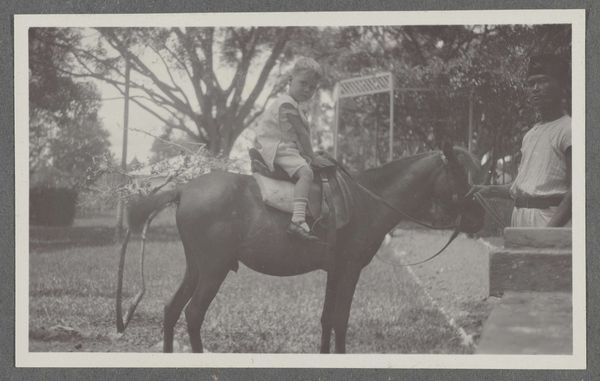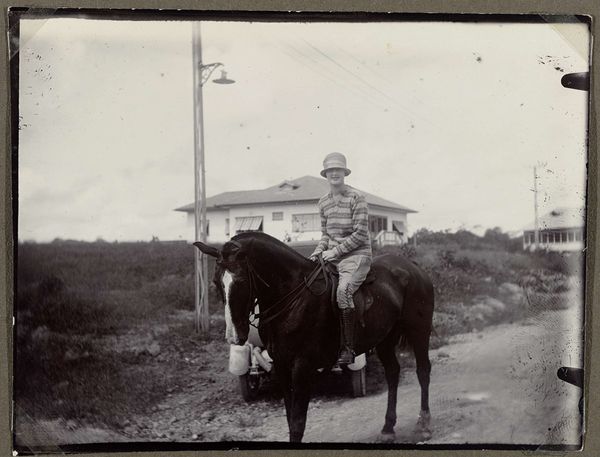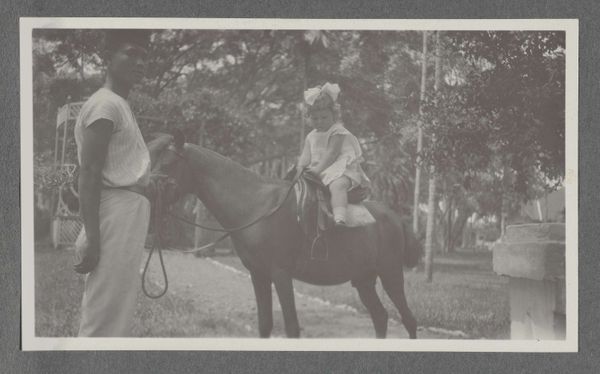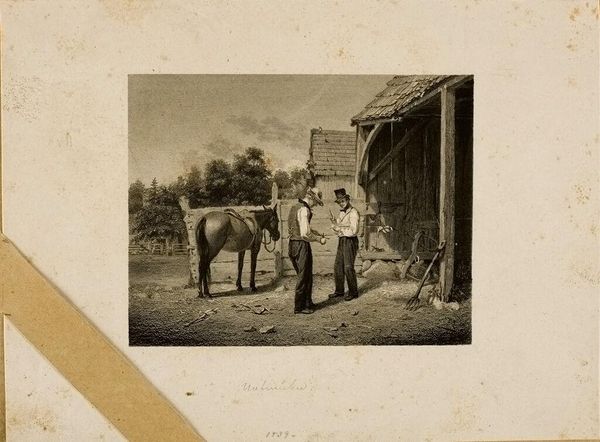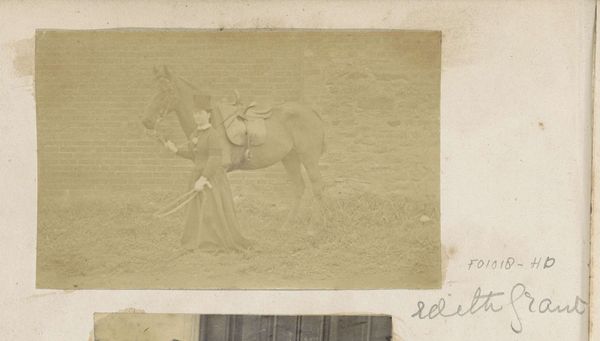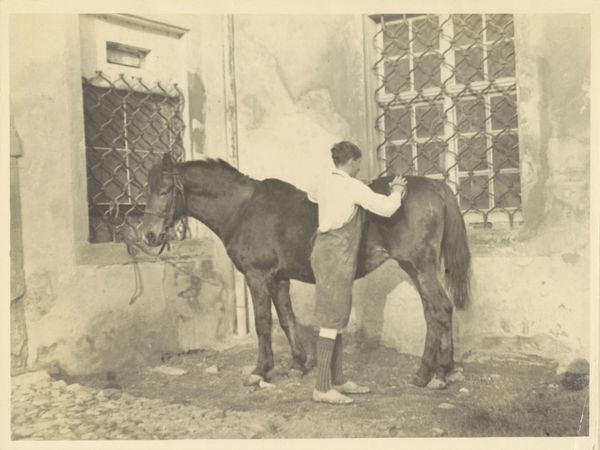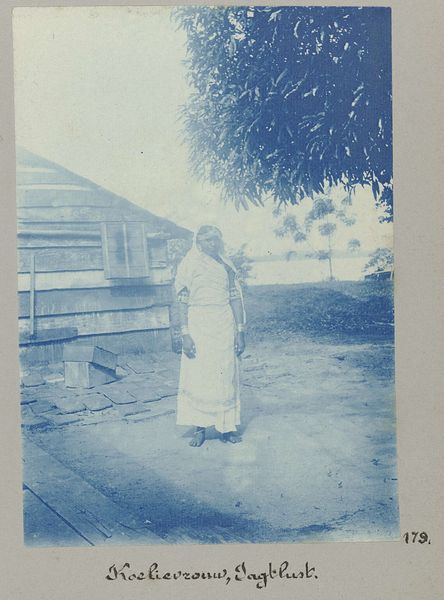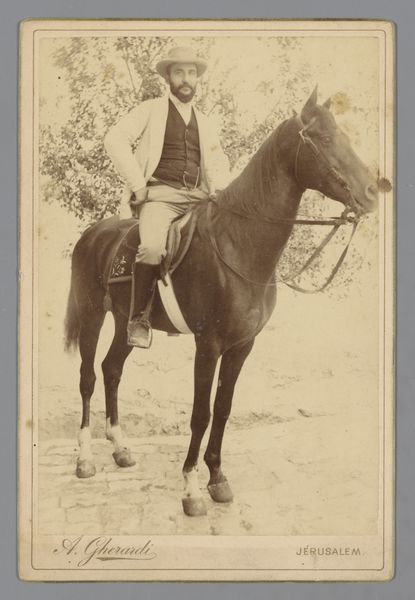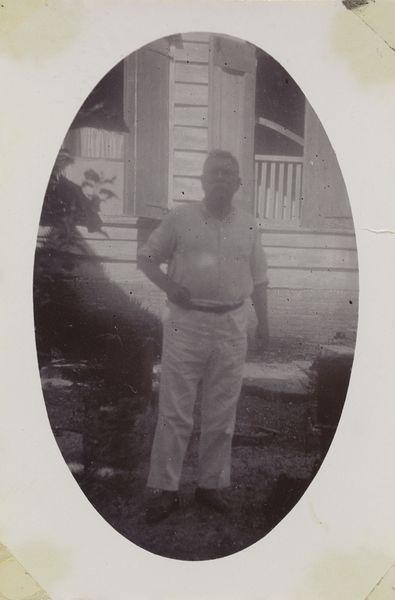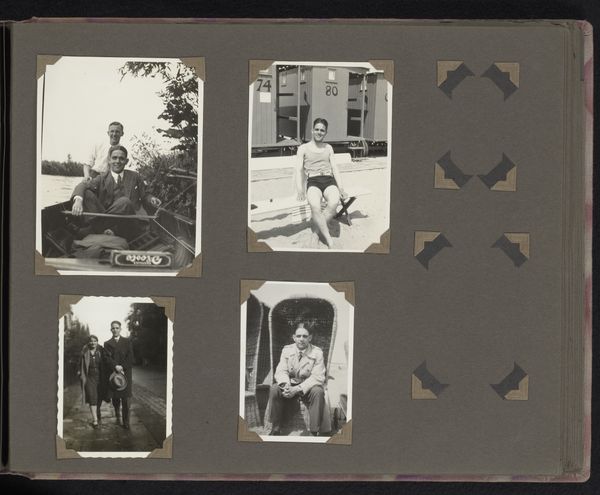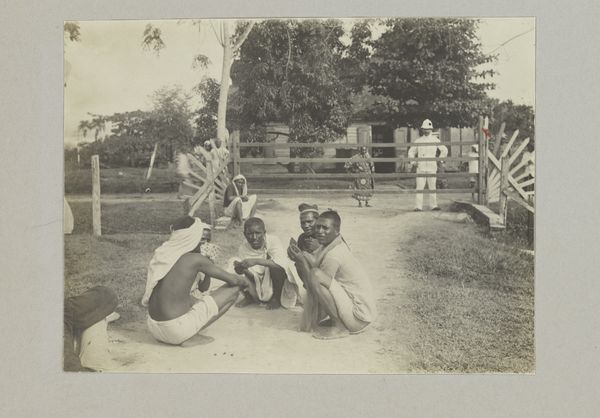
Man in een wit tropenpak op een paardje in het Indonesische landschap. c. 1912
0:00
0:00
photography
#
portrait
#
landscape
#
photography
#
orientalism
Dimensions: height 57 mm, width 128 mm, height 242 mm, width 333 mm
Copyright: Rijks Museum: Open Domain
Editor: This is a photograph, taken around 1912 by Frits Freerks Fontein Fz., titled "Man in een wit tropenpak op een paardje in het Indonesische landschap" – "Man in a white tropical suit on a horse in the Indonesian landscape." It feels very staged, almost performative. What do you see in this piece, beyond the obvious? Curator: I see a potent image of colonial power relations at play. The man, dressed in a pristine white suit—a stark visual contrast to the landscape and, implicitly, its inhabitants—is literally elevated above the environment, a posture of dominance. What does that sartorial choice signify to you? Editor: It screams 'outsider,' someone trying – and failing – to blend in. It's almost satirical, the whiteness so aggressively…white. Curator: Precisely. Consider how photography, especially during this period, was used as a tool to construct and disseminate colonial narratives. This image contributes to a larger discourse of Orientalism, where the 'East' is romanticized, exoticized, and ultimately, subjugated. How does that make you feel? Editor: Uncomfortable. I see the beauty of the landscape, but I can't separate it from the history. The staged nature makes it feel even more artificial and constructed. Curator: It is crucial that we engage with art like this critically, acknowledging the complex and often problematic histories embedded within them. This photograph isn't just a portrait; it's a document of power, a reflection of unequal global dynamics, and a reminder of the lasting impact of colonialism. How can this image challenge contemporary audiences to consider our world? Editor: By forcing us to confront uncomfortable truths about the past, and how those power structures still resonate today. Thank you. Curator: A critical approach opens pathways to better understanding of ourselves and the art itself.
Comments
No comments
Be the first to comment and join the conversation on the ultimate creative platform.
